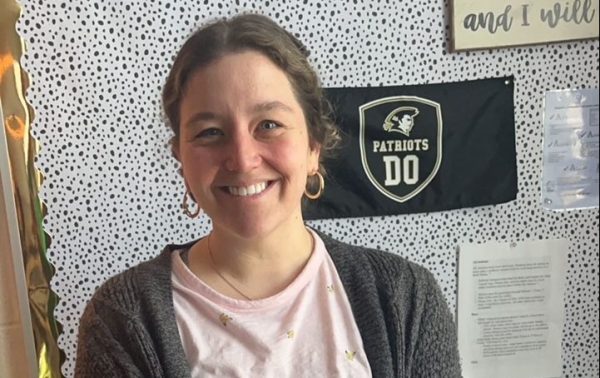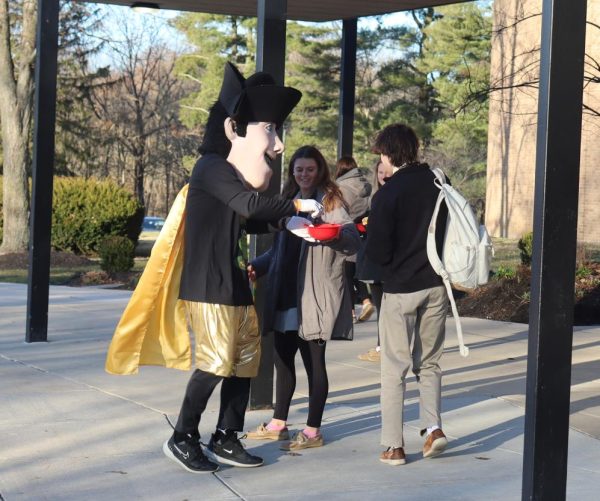Being bilingual benefits students
Bonjour, hola, czesc, 你好 (Nín hǎo), Hallo, and नमस्ते (Namastē) are all ways to say hello
Students have the opportunity to learn four different foreign languages at JC. They can choose to learn French, Spanish, Chinese, or German. These classes teach students the basics, so few become fluent. There are select students, other than the international students, who are bilingual.
Senior Rawlison Zhang speaks Mindong Chinese (Fujinase). He learned the language when he was young from being around his family.
Zhang visited China at a young age with his family. He was born in America, going to China gave him an opportunity to see the country his family was originally from. He learned Chinese from his grandparents. Being able to speak two languages and learn about both cultures gave him a more “straight forward and primary view of another culture.”
“You can’t really learn Chinese culture through English. When you have a translator, there is always a bias. In Asian cultures, there is a different aspect to it. Eastern and Western cultures are so different,” Zhang said.
Zhang met kids that can switch back in forth quickly. He’s more skilled in English, so he might know a word in English but not know it in Chinese.
According to the ASHA, or (American Speech/Language Hearing Association), being bilingual allows you to do several things. It gives you the ability to learn new words easily, break them down by sounds, and put them into categories. It also gives you good listening skills and helps you connect with others.
President Richard O’Hara likes to talk to people who come from other cultures and places around the world, especially the international students at JC.
“English is very utilitarian. It’s not very intriguing because I speak it all the time. Even just saying hello in Korean, there’s an instant reaction that breaks down barriers,” O’Hara said.
Even as a Spanish teacher, when O’Hara visited Buenos Aires, Argentina for the first time he was “struggling to string sentences together” due to the speed at which they talked.
“Learning a language when the pace is slow is one thing, but speaking it fluently is different,” O’Hara said.
Learning new languages can break the so called “language barrier”. The students at JC who are bilingual are able to do this and learn about different people and cultures.
Two students at JC that speak both English and Polish are senior Samantha Wieczynski and junior Adam Mrowiec.
Wieczynski’s whole family speaks Polish, and at family gatherings Polish is the dominant language used in their conversations.
“If it is someone’s birthday, we have to sing happy birthday in Polish,” Wieczynski said.
She loves the language and feels that it is a “connection” with her family and it keeps the family tradition going. Her father’s side is 100 percent Polish and her great grandparents emigrated from Poland.
“My grandfather would convince me when I was little that by changing the ‘w’ to a ‘v’ in words, that it made the English word Polish,” Wieczynski said.
Mrowiec’s family speaks a mix in his household. There is no language barrier between him and his parents. It was “hard” for him growing up, because he did not want to feel different than others.
“I embrace it now and think it will help me in the future. I think it gives me a step up on other people. I have seen two different cultures and it allows me to have a different viewpoint on things,” he said.
Mrowiec used to write letters to his grandmother in Polish, and he has several cousins and uncles that live in Poland, and visits them during the summer.
There is one language that doesn’t involve speaking—sign language. Sign language involves hand gestures and signals. It is for people who are not only deaf, but people who cannot physically speak.
April Moscati, class of ‘14, and junior Nick Moscati’s little brother Sam has Worster-Drought Syndrome. It is a form of cerebral palsy. Because of this, he has trouble verbally communicating. He can say short words and although his family can understand him most times, sign language is a necessity.
“I could see how he would become frustrated with not being able to communicate. I wanted to learn sign language and teach it to him and the rest of the family. I took a basic sign language class once a week at the Community College of Baltimore County Essex for a couple months and would show Sam some of the signs I had learned,” April said.
Sam had learned a lot of the signs from school. April thought it was really cool because before class he would do random hand motions or point at a part of his body.
“I wouldn’t think much of it, but while doing the class I realized that he was trying to sign and communicate with us,” April said.
April plans on pursuing a career involving sign language and working with kids who have communication disabilities.
“Learning sign language will help me a lot in the future. I’m going into early childhood special education so I think sign language will not only be beneficial to helping my brother, but also the students I have in my class who can’t communicate verbally,” April said.
Junior Gabe Webster has an adopted brother who has hearing impairment. Webster learned sign language at the age of four, so he could communicate with his brother.
“Sign language can help me speak to a larger range of people. The deaf culture is expanding a lot more now. I am not fluent yet, but am still learning to hopefully get there,” Webster said.
It’s easier for Webster to use sign language in public to communicate with his family without talking.
“He’s learned to read lips more now so I don’t have to sign as much anymore. We only use sign language when things get too complicated,” Webster said.
According to Webster, it’s hard when people are fluent because they sign really fast, and it gets difficult. His brother plays football with other deaf children and the football games are all silent. There is no cheering. However, there is a drum that is hit whenever it’s time to hike the ball or when someone scores in order to allow the deaf players to feel the vibrations. His brother also is in theater and along the side there are interpreters to assist them.
Learning foreign cultures and various languages helps you connect with people, find a career path, and talk with your family and peers.
According to AP Psychology teacher Paul Lazor, “People who are bilingual are less prone to diseases like dementia. They use the brain in a different way and have to suppress one language to use the other. It takes more mental effort, and learning a second language at an early age is crucial. Ages 1 to 4 is the critical time for learning languages. The older you are the harder it is to learn a language.”
Mike Moxley is a Multimedia Editor for The Patriot and jcpatriot.com.






